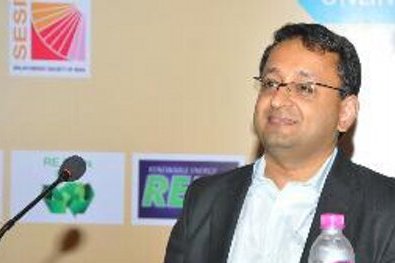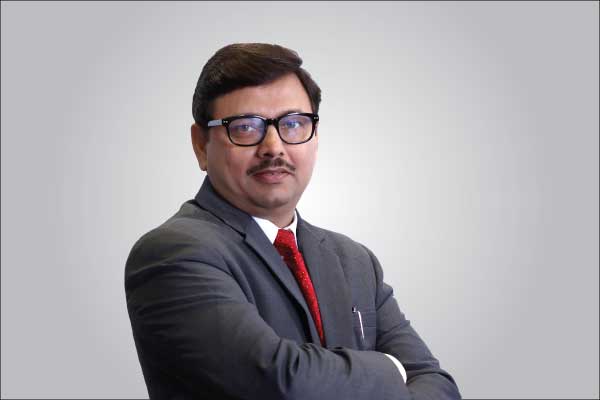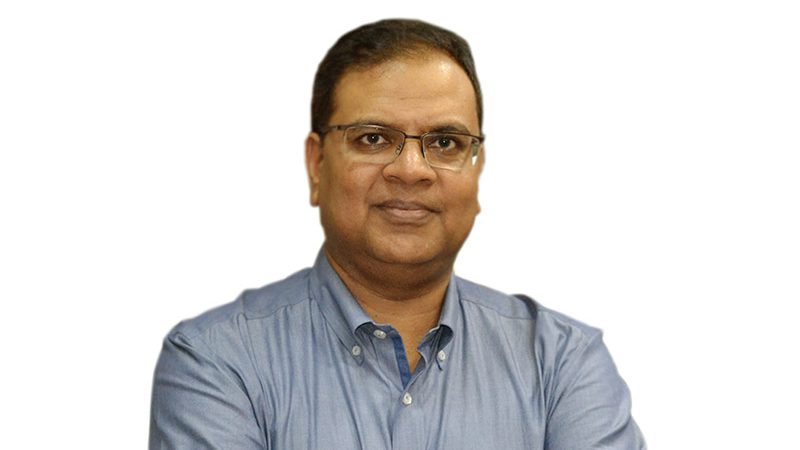Interview: Ritesh Pothan

Ritesh Pothan, Senior Vice President, Sorpius Trackers – one of leading solar tracking solutions company – shared his views on Indian Rooftop Solar sector’s growth scenario and challenges faced by the sector along with an insight on key trends. Excerpts. .
What is your say on India achieving 40GW of rooftop solar installations by 2022 looking at the current growth scenario in the segment?
This is an ambitious number given that a year earlier the target was 20GW by 2020 in total for both ground and roof. The current infrastructure and incentives is not build in such a way that it would benefit residential user to drive solar consumption. The solar growth in rooftops has been confined to Industrial and Commercial largely due to the RESCO players in the market. The sum total of rooftop RESCO has been much below 500MW for the last year.
The distributed nature of the execution and supply makes this a both a difficult and lucrative space for small suppliers in the 1KWp – 50 KWp space creating many more employment opportunities than large scale plants would entail. The latest tender by SECI has seen a lot of enthusiasm in the RESCO and CAPEX space, but how much of that can be translated into real projects is a very large question mark given the poor success of past bids.
The recent delisting of a very large section of MNRE partners is a case in point that proves the will and the effort needed has to increase exponentially for the market to reach 40 GW. Also per capita energy consumption in India is amongst the lowest in the world making this number further tougher to meet.
The small residential segment (1-5 KWp) requires a substantially higher Feed In Tariff coupled coupled with quicker payout subsidies initially is needed across states for residents to understand the viability and ROI of installing solar on roofs, given that pricing and system costs are highest at these system sizes. With states providing 24 hour electricity Solar is now looked up more as a luxury than a necessity unlike 5 years ago.
In spite of policy support and incentives from the centre and state governments, the segment has witnessed a slower growth than expected. In your views, what is the need of the hour – Policy modifications or Proper implementation of policies – to boost the pace of growth in rooftop segment?
Policy modification tied with quicker and cleaner implementation of policies is the need of the hour, given that SECI in the past has provided subsidies for rooftops but system integrators have failed to develop the incentives into projects due to uncertainty in subsidy delivery. The uncertainty of the subsidy payout coupled with the greed of the integrator has spell doom for the residential sector with early adopters disappointed with shoddy implementations and lackadaisical O&M. Cities and towns across India are delivering lower power from installations due to tremendous pollution issues.
The narrowing of subsidies to smaller sizes was needed however quality standards and audit mechanisms to ensure efficient delivery is severely lacking. Focus needs to be on quality benchmarks with end to end management of systems making it a no brainer for residential, industrial and commercial use.
What are some of the key challenges faced by the sector that are impeding the targeted segment growth? What course of action would you suggest to overcome these challenges?
The major challenges that we see in this segment are tremendous quality and over pricing for residential customers especially. Online marketplaces do alleviate the issue to an extent by providing tremendous information but not everyone is savvy enough to exploit the available resources. They are also not aware if the installed system pose a fire hazard or health hazard with unsafe technology and installation methods being used by uncertified installers with little to no real understanding of the hazards of a badly designed system Net metering issues are also an impediment to the fledgling residential sector who see a tremendous amount of effort in initializing their systems with the DISCOM.
These will result in a number of opportunities in the space which can be used to deliver more jobs and boost the local economy as well.
What new and emerging business opportunities do you see in the rooftop solar segment in India and how do you see the segment evolving ahead?
Quality focused System Integrators Rating’s: The integrators should be rated based on independent Thrid party audits conducted on behalf of MNRE to rank the generation and quality components based on certain criteria. And not just turnover based
Process based O&M services with SLAs: Given the difficult O&M management issues for rooftop, dedicated agencies have mushroomed that focus in specializing on rooftop O&M in a large way. This will continue to be the trend and a lucrative market is out there for the taking
Audit of Installed Systems by Third Party made mandatory by the DISCOM: DISCOMs should also independently audit the installed systems to give a further local quality rating as well as develop relationships with SI’s who would.
Quality Product Listing: Independent Agencies and Labs should correlate actual performance data from various SI’s to deliver statistical data that can quantify the various failure and efficiencies various components in the market
Transparent Pricing: Standardized pricing driven by local agencies as well as government agencies n Quality Audits: MNRE should create a certification body that delivers a set of parameter in quality, safety and fire to ensure that each SI complies with these standards to ensure that no risk to life incidents take place.
The need for specialised O&M players, easy to install commoditised solutions, transparent pricing providers, single window net metering clearance, Quality Auditors, BIS Standards, System Optimization will increase as installations grow.








